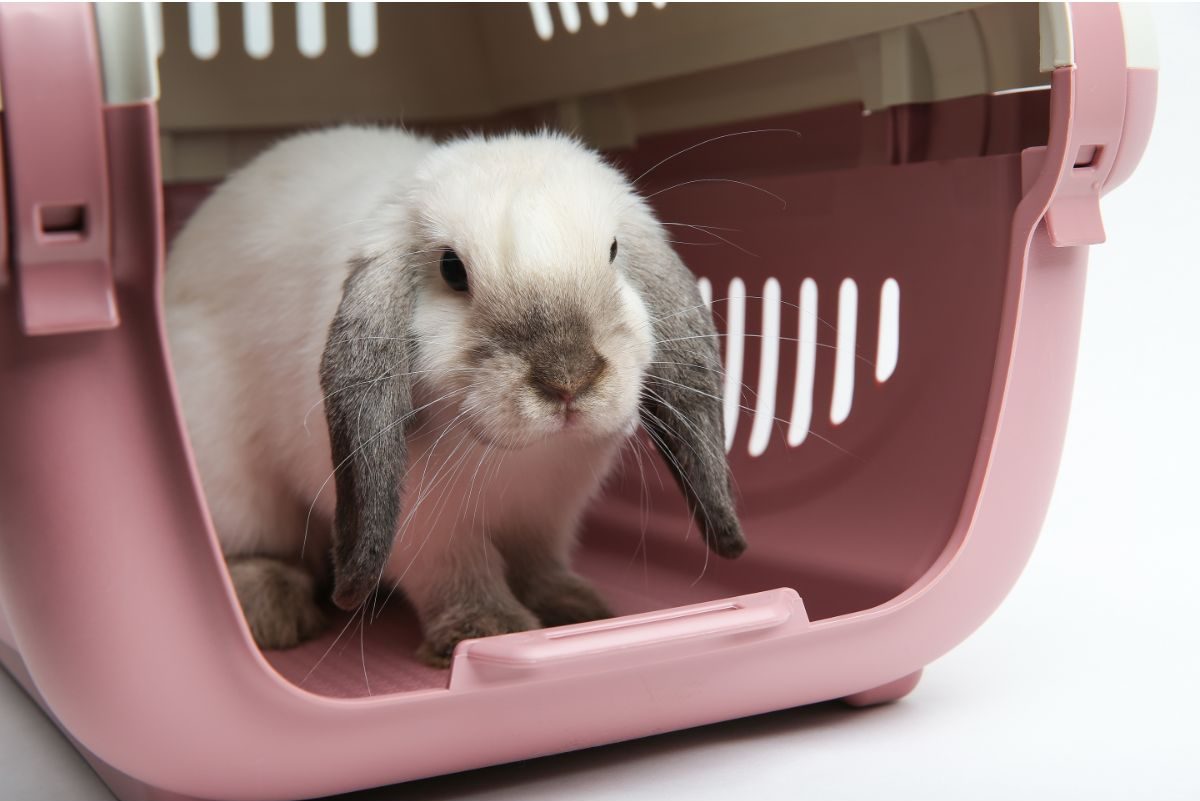You might need to travel with your bunny, whether a short trip to the vet or a longer journey by car or plane. With short journeys, you can generally make them stress-free for your rabbit, but you will need extra support if you’re traveling for some distance. Knowing what to expect and what you will need to do can make this journey easier for both of you.
When traveling with a rabbit, ensure they have a small, secure carrier that is easy to carry and clean. Avoid slippery surfaces or large cages, as your rabbit could be injured when sliding around. Pack a long-distance travel kit with all necessary items, litter, and food for your rabbit.
You will sometimes need to travel short distances with your bunny – perhaps when you first collect your bunny to take him to his forever home – but other journeys are much longer. Perhaps you’re moving home or going away for a long time. Some bunnies cope better with travel than others, but you can minimize anxiety by following these basic guidelines and keeping your bunny comfortable.
Contents
How To Travel With Your Bunny?
Bunnies are generally nervous about new and unfamiliar situations, and travel stress can upset them. Some bunnies cope well with travel, while others can get quite anxious and panicky, but by making them feel more secure and safe, you can minimize their distress.
Using the correct travel containers and ensuring the carrier is secure and comfortable makes the journey much less stressful for your rabbit.
By planning ahead, you will have your rabbit in the best condition for travel, appropriate carriers, and an emergency kit to use if things go wrong. Longer journeys will need more equipment, especially if you’re making a multi-stop journey with extended stays.
How Do You Transport A Bunny By Car?
When you travel with a bunny by car, you must have a rabbit-suitable carrier. Never hold your bunny on your lap, or put her in a cardboard box. Bunnies prefer small, dark spaces to give them a sense of safety, so larger carriers are not always better.
In a large carrier or cage, there’s a risk your bunny could slide around as the vehicle moves, injure themselves, and increase their panic. Soft carriers might be okay for short trips down to the local vet, but I would always recommend bunny owners get a high-quality, safety-tested small pet carrier.
Whichever carrier you choose, these are the things to look for:
- Easy to carry with handles
- Sturdy
- Safe for your bunny
- Correct size – if you have two bunnies, it’s better for them to travel together
- Has adequate ventilation
- Easy to clean
One of the bunny carriers I recommend for travel is the Sleepypod Mobile Pet Bed*.
How Do You Calm A Bunny Down In The Car?
Firstly, you should get your bunny used to their carrier before you take them on any car journeys. Line the carrier with a blanket that smells familiar to them, and put some of their toys inside. By leaving the carrier out for your bunny to explore, perhaps hop into themselves, you make the carrier much less frightening for them.
By having a lined carrier, you will also lower their stress. If you have a rigid plastic carrier, the floor will make them slip around and stress them even more. One thing I’ve done is line a plastic carrier with a non-slip rubber drawer liner* and then lay the blanket over that to prevent things from moving around too much.
If your rabbit is used to their carrier, keeping them calm in the car will be easier. Make sure their carrier is strapped with a suitable seat belt extender, and don’t leave them to travel alone. Sit alongside their carrier and talk gently to them.
The small, dark space of the carrier will also help, though they will not want to be kept cooped up for hours. For longer journeys, plan on taking breaks to allow your rabbit a chance to move around and eat.
How Do You Travel Long Distances With Bunnies?
If your journey is going to be long, you should plan on taking extra stops and carrying food and a kit.
Your rabbits need food and water during the journey and a place to stretch their legs. Expect a break every 2-3 hours to allow your bunny time to stretch its legs and move around in the pen.
I recommend taking the following for your bunny if you travel long distances:
- A small pet pen. You can put the open carrier inside the pen and leave out appropriate food and water. Let your rabbit leave their carrier on their own – you can try to tempt them with treats, but sometimes it’s best to leave them alone. You can buy a small animal enclosure* that folds up for compact travel.
- Litter box. Your bunny will likely want to relieve themselves, and you will need to clean their mess up, so have appropriate litter and scoops. You can get collapsible travel litter boxes* which can also be used for storage.
- Litter box liners. These liner bags* can make cleaning up much easier while you’re traveling.
- Food and water bowls. Collapsible bowls* take up less space in your luggage.
- Extra water for the carrier. Although your bunny may not want to eat or drink, you should always have water available for them. You can attach a water bottle* to their carrier.
- Food and hay.
- Pedialyte infant rehydrating solution* and syringes in case your bunny becomes dehydrated.
Safety When You Travel With A Bunny
You’ll want to ensure that your carrier moves around as little as possible. Firstly, any extra motion can be terrifying for your bunny, and secondly, for safety reasons.
If your rabbit is moved around, it may slip around in its carrier and become injured. You also want to be sure that the carrier will stay in place if there is a sudden stop or swerve.
If you have a standard hard carrier – like those for cats – they usually fit very well into the footwell of the car’s back seat. Other carriers can be secured with seat belts or seat belt extenders for pet carriers.
Keep the car cool so your bunny doesn’t overheat, and check on them frequently to ensure they show no signs of heatstroke.
Have a number of a vet you can call if your rabbit shows any illness or injuries.
Conclusion
Traveling with your bunny can be stressful for them, but if you make appropriate plans and get them used to his travel carrier, you can lessen his anxiety. Put together a travel kit that includes all food, litter, exercise pens, cleaning solutions, and medications in case of emergencies. Never leave your bunny to travel alone, and check on them regularly.




